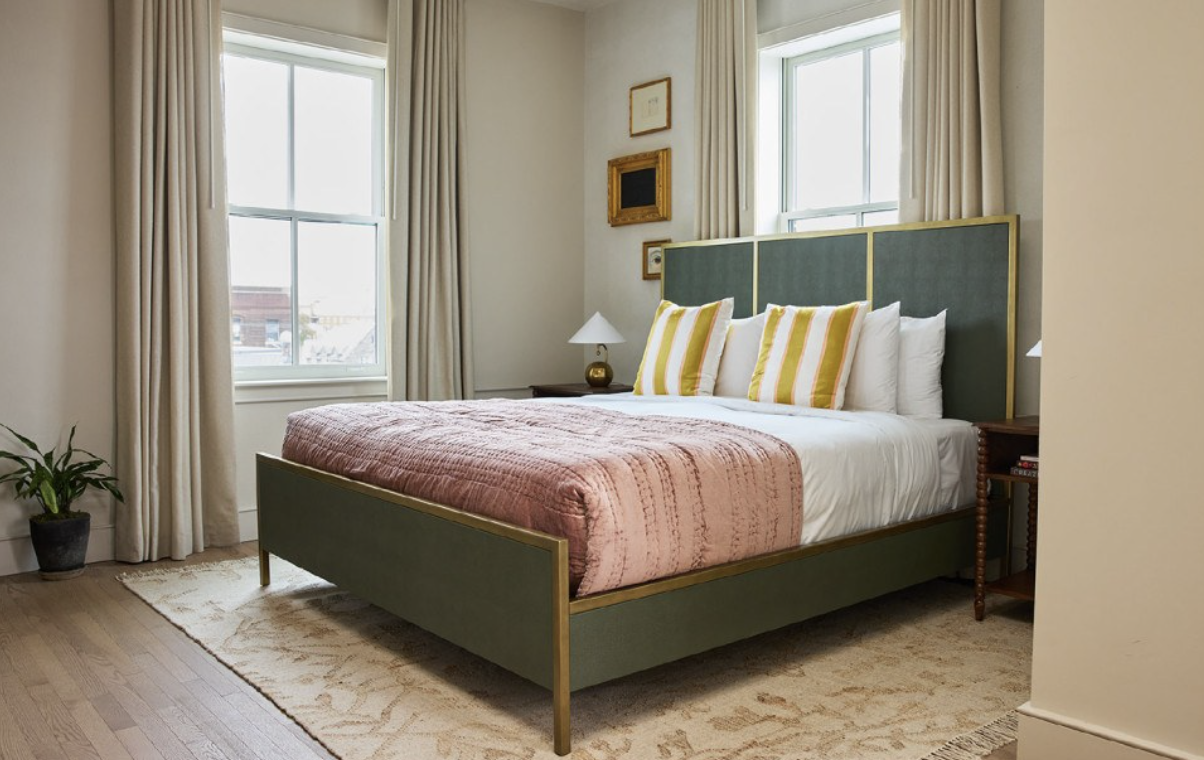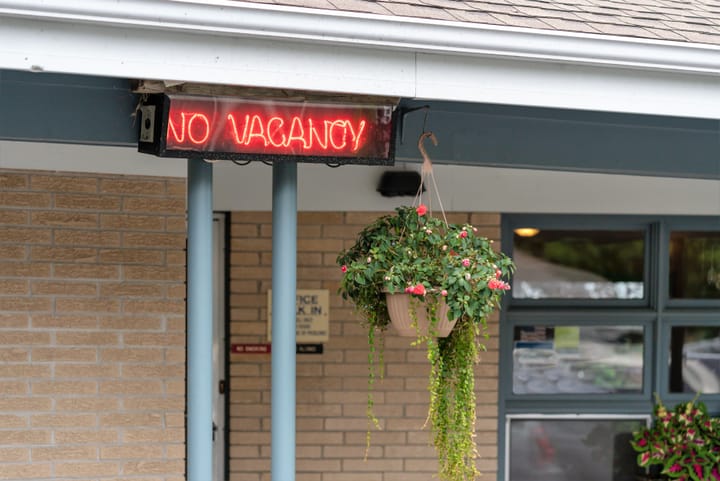Locals first, guests second
Hospitality expert Jen Quist on why the best F&B concepts feel like home

Curiosity might kill the cat, but it also builds better hotels. This week, we’re spotlighting why staying curious is key to growth, why families deserve way more love (seriously—they’re loyal, high-value guests) and how a simple litmus test can sharpen your underwriting game. A fresh mindset, untapped audiences and sharper strategy? That’s the triple win we’re after. Let's go!

Coming home to yourself. If you’ve ever looked longingly at your hotel room and thought, “I could live here,” Philadelphia’s Hotel Anna & Bel now makes it possible. The two bedrooms of its Anna Suite, designed by lifestyle brand Anthropologie, are fully shoppable through a custom in-room QR code.
Vibe > metrics. Silently dismayed at the discombobulating array of choice and pressure to book the ‘best trip ever’? Your desire for simplicity and spontaneity on trips isn't uncommon these days and it actually has a name: ‘soft travel.’
Standard practice. The U.S. House of Representatives has passed the bipartisan Hotel Fees Transparency Act of 2025, which, according to AHLA, will ensure consistency for consumers nationwide by establishing a federal standard for price advertising across the lodging industry.
A family affair. EDG Interior Architecture + Design creative director and hospitality consultant Oliver Corrin says many hotel brands consistently undervalue one specific audience: families. "Because when you get it right, they don’t just stay with you," he says. "They grow up with you."
Fail whale. We don’t like to talk about missing the mark, but when it comes to sustainable practice implementation in hospitality, failures are inevitable. This expert says that acknowledging mistakes can be a powerful catalyst for improvement.

‘Creating connection doesn’t come from trying to be everything to everyone’
With nearly two decades of experience in concept development, operations, guest experience and brand building, former restaurant owner/operator Jen Quist launched Wishwell, a hospitality strategy and development firm specializing in high-performing food and beverage concepts and memorable guest experiences. Here, she shares her approach to designing functional F&B outlets that foster genuine connection and align with how people naturally move and gather. -Jennifer Glatt
Balance creativity with operational practicality—how do you ensure concepts aren’t just beautiful on paper but viable in execution?
I don’t separate creativity from practicality; they’re built together from the start. Every concept I work on has to hold up in real time, with a real team, during a slammed Saturday night and a quiet Tuesday. From day one, I’m thinking about how guests move through the space, what the kitchen can actually execute, how the service model fits the labor pool and whether the financials can actually be realized. It should be beautiful, absolutely! But it also has to work. If it can’t function under pressure or support the people running it, it’s not a concept, it’s a mood board. My job is to make sure the creative vision is backed by strategy and structure, so it works for your guests, your team and the community that keeps coming back.
How do you keep a hotel’s F&B outlets aligned with its brand identity?
I use the hotel’s tone and brand energy as a starting point—but from there, the F&B needs to become its own story, its own concept. It should have a clear, original identity that reflects the spirit of the hotel without mirroring it. That’s the difference between a restaurant that feels like an amenity and one that builds its own reputation. The strongest concepts can stand on their own while still feeling aligned with the property as a whole. Just as importantly—and a big part of the intention behind my work—the F&B needs to resonate with the city around it, not just the guests upstairs. When it becomes part of the local fabric, it creates a deeper sense of place for everyone. And what better way to experience a destination than by sharing space with the people who live there? That’s how you create a community cornerstone—one that lets travelers feel like they’re in on the local scene, and locals feel like they have a home in the heart of their city.
What key metrics define F&B success, and how do you measure it for your clients?
Of course the numbers always matter—sales, labor, cost of goods sold—but performance is more than a spreadsheet. I always look at how the team is doing. Are they proud to work there? Are they staying? Are they delivering consistently because the systems support them? A healthy team that’s invested in the guest experience is one of the clearest signs of real performance. I also pay attention to alignment. Is the concept clear and consistent across every touchpoint? Does the operation feel intentional? And most importantly—does it feel like a place people want to return to, not just pass through? For my clients, that’s what success looks like: a strong foundation, healthy teams, clear operations and an experience that truly resonates. When you get that right from the start, the business follows.
What emerging trends in guest dining behavior are you seeing, and how should boutique hotels adapt to stay ahead?
Guests want to feel where they are. Whether they’re in town for a night or settling in for a longer stay, they’re looking for something that gives them a sense of place. That’s where F&B can create real connection. When it reflects the local energy and welcomes both guests and neighbors, it stops being just a hotel outlet—and starts becoming something magnetic. But creating that connection doesn’t come from trying to be everything to everyone. Hotels are often set up to check boxes, especially when it comes to food and drink menus. But more isn’t always better. The strongest concepts are thoughtful and intentional—clear about what they offer and why it matters. And don’t overlook rhythm. A solid coffee moment in the morning, something easy in the afternoon and a space that makes people want to linger at night. It’s not about programming for the sake of it—it’s about building something that fits how people move, gather and come back. The goal isn’t to be the next bright and shiny thing. It’s to build real connection—and that will always matter more than any trend.


Make it work
Project Runway fans rejoice—fashion and hospitality are colliding in Connecticut with Delamar Hotels’ new Westport property. Season 4 winner Christian Siriano has been tapped to design the hotel’s lobby and suites.
Why it matters: High-profile fashion designers are moving into hospitality design. Siriano’s involvement signals a push toward creating distinct, high-style environments that emphasize personal expression, luxury and a strong sense of place—hallmarks of the boutique hotel experience. (New Haven Register)
Christian Siriano sketch (Christian Siriano)

Money mojo
If financing, adaptive reuse and asset growth in the boutique space is your jam, you'll appreciate the approach taken by Hubert Worrell, CFO at Castlerock Asset Management. “Once we know we have a destination with enough soul and the right location in that market, the first litmus test in our underwriting is tried and true," he says. "We look for the NOI Yield on Total Cost as our initial gatekeeping metric.”
Why it matters: Eliminating distractions early is critical. Keeping the investment process focused on projects with the strongest potential for returns saves time and resources and ensures that only the most promising deals move forward. (BLLA.org)

Curiosity feeds the craft
Shawn Walchef, owner of Cali BBQ and Cali BBQ Media, says that boutique and independent hotels should view themselves as media companies, leveraging storytelling through blogs, social media and podcasts to forge deeper guest connections. “The better that we get at that craft, the deeper the connections we make, both at our restaurants in real life, in our community, but online,” he says.
Why it matters: Differentiating your property requires more than traditional marketing. By humanizing your brand and offering behind-the-scenes insights, you create emotional connections that drive repeat business and positive word-of-mouth. (Defining Hospitality)

Let’s see how this works
Ever thought about reframing uncertainty as fuel for discovery? Former Google exec turned neuroscientist Anne-Laure Le Cunff invites us to view life as a series of tiny experiments.
Why it matters: Breaking free from prescribed life scripts opens the door to genuine curiosity and fulfillment. Le Cunff’s research-driven approach helps you navigate uncertainty while staying rooted in what truly matters—your own experience of joy and meaning. (Sparked)
💯 Enjoying Mint Pillow? Share it with a friend.
👋 Have a story idea or want to say hello? Email us at newsletter@mintpillow.co




